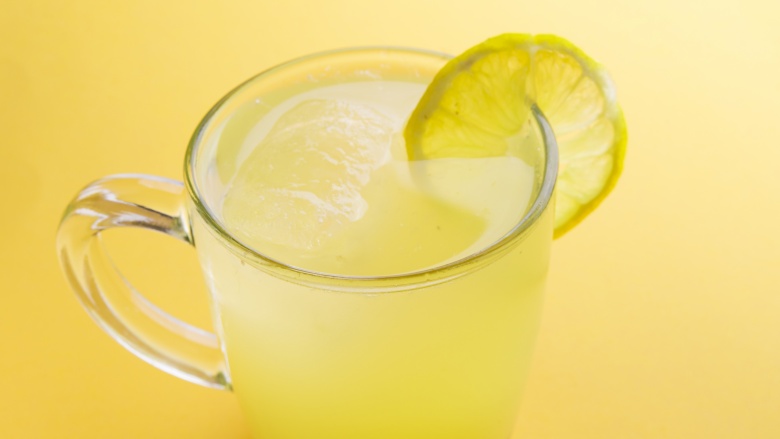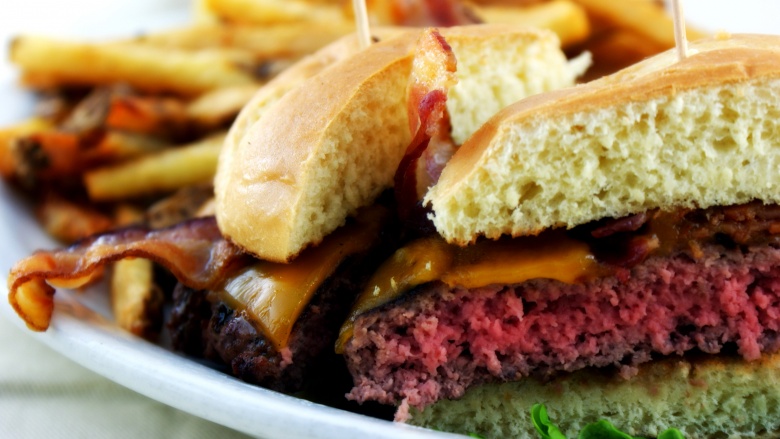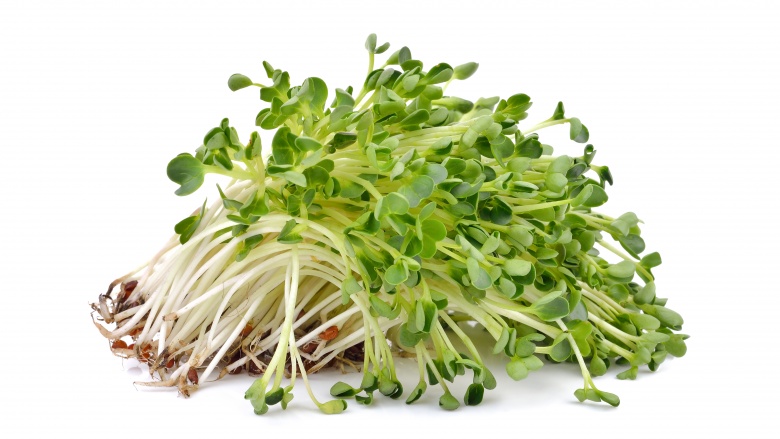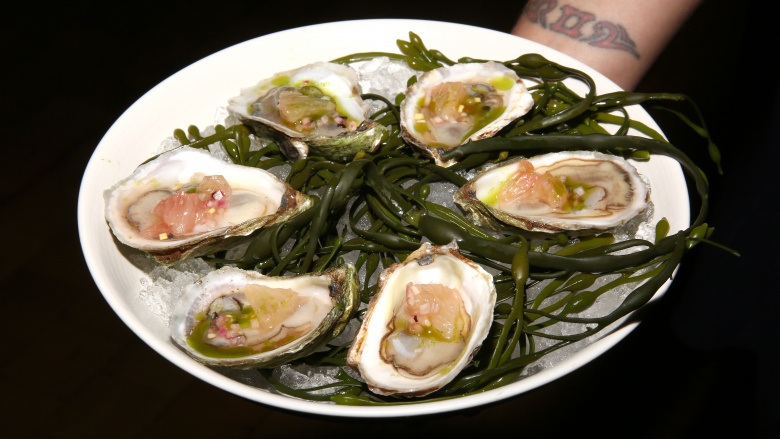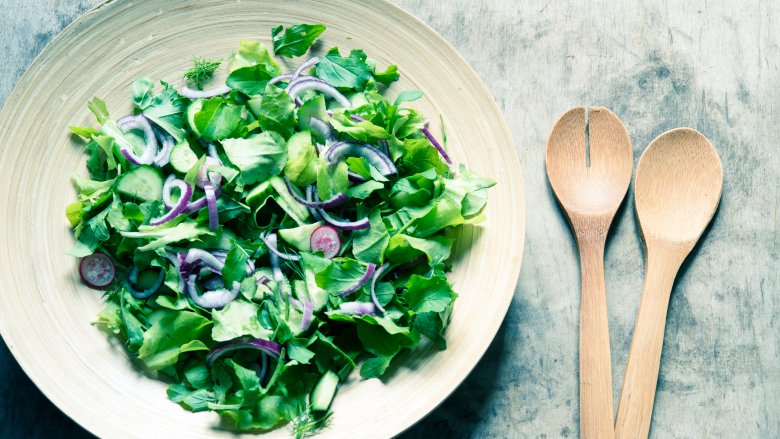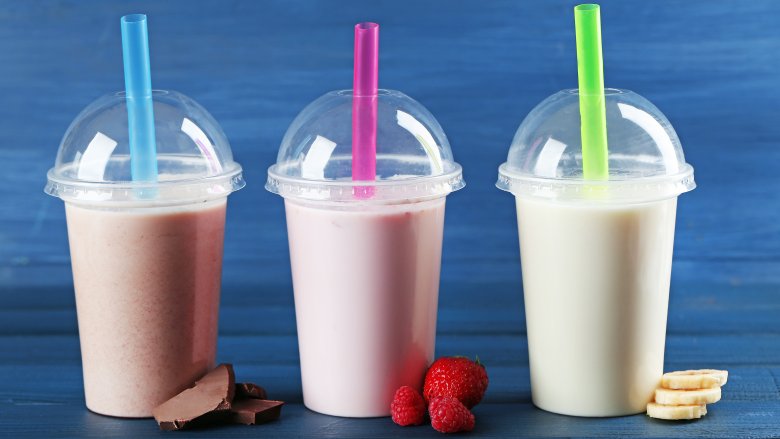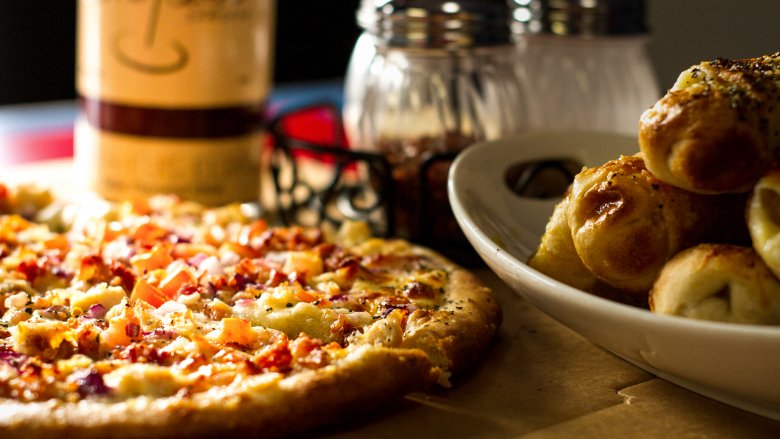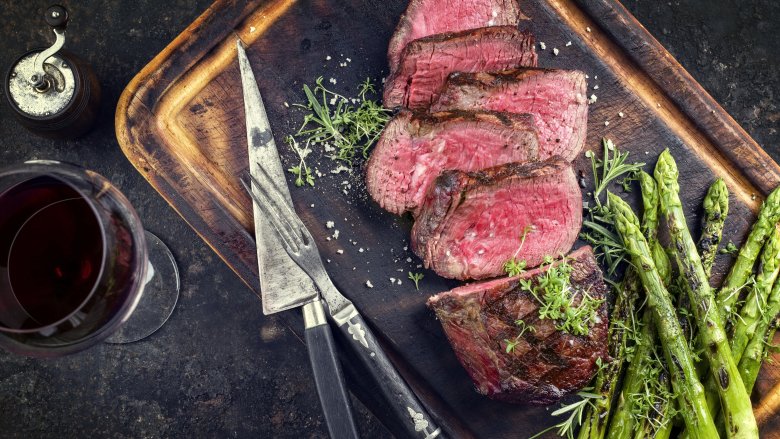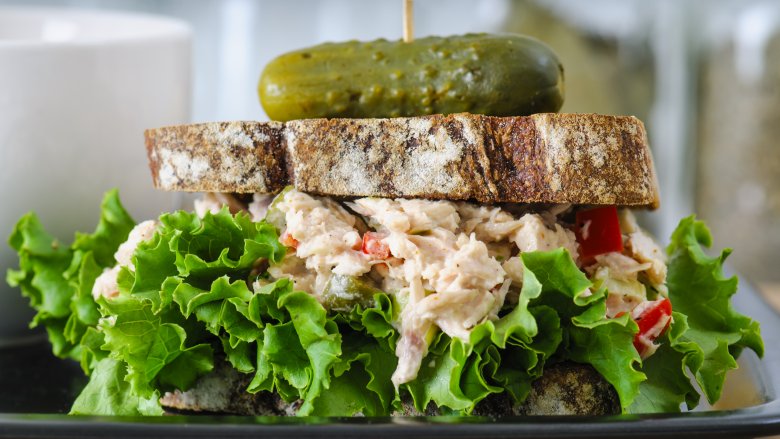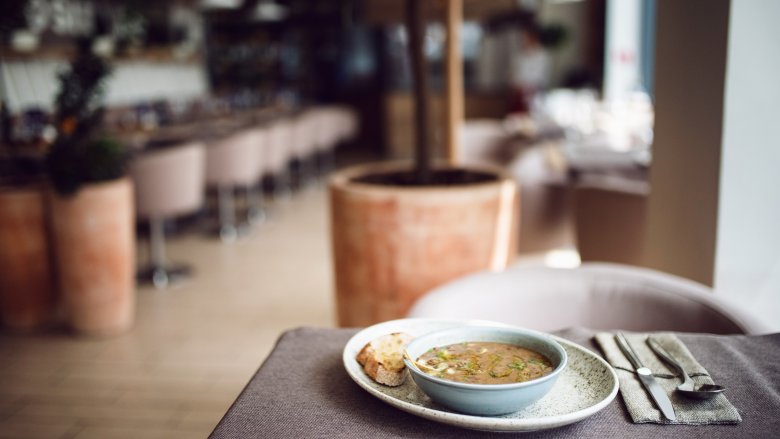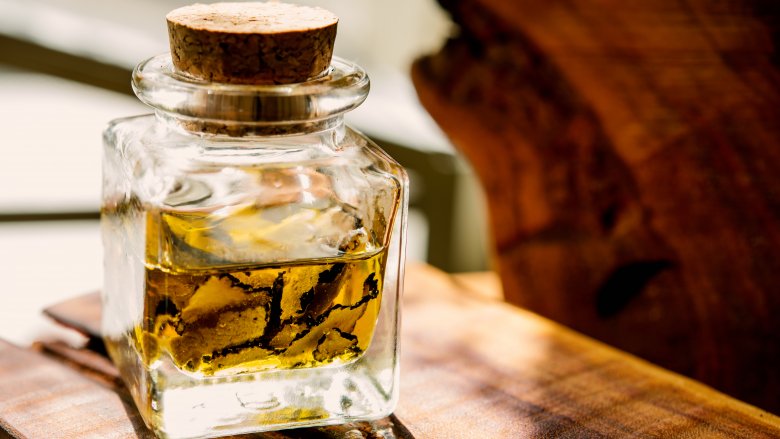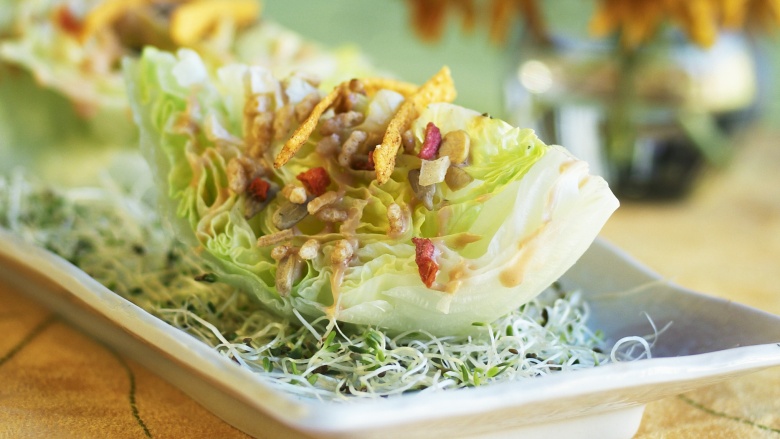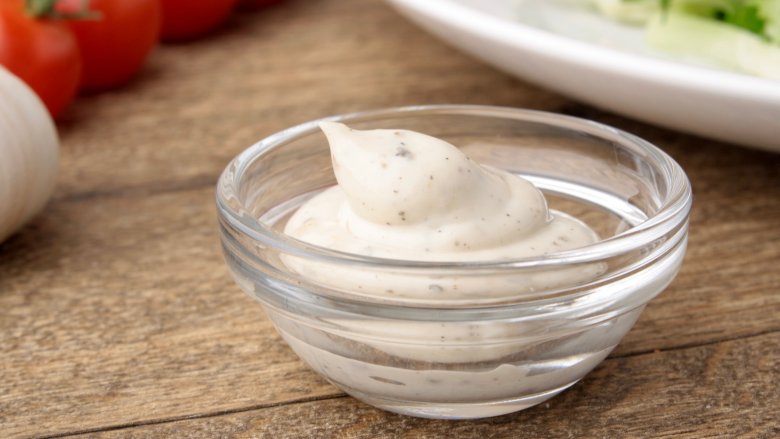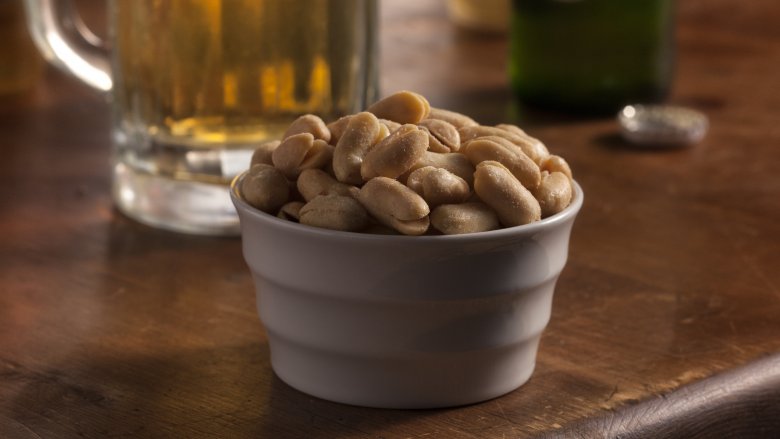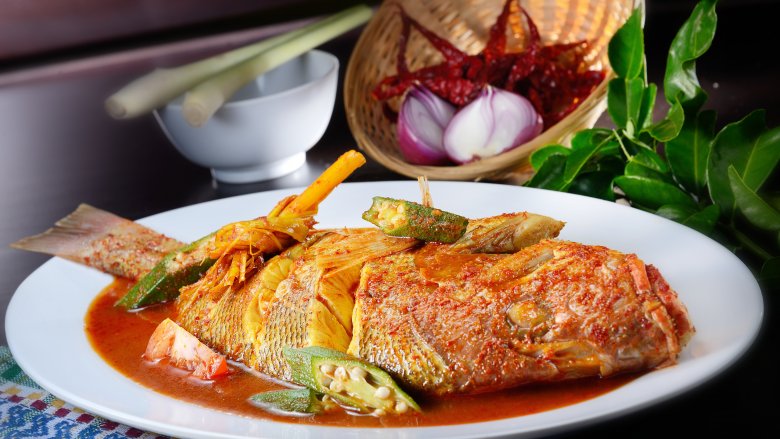Popular Restaurant Dishes You Should Avoid
When you sit down at a restaurant — especially a nice one — for a long-awaited dinner out, you probably expect everything on the menu to be not just tasty, but safe to eat. Especially safe. They wouldn't be serving the food if it had any potential to cause you harm, right? Well, we wish that were true, but unfortunately, it's not. Most of the time, this is of no fault of the kitchen staff or chef — some foods are just predisposed to be a bit riskier. Sometimes though, the restaurant staff could ensure your foods are safe to consume... they just don't. Unbeknownst to many unsuspecting customers, those expensive dishes being served at your favorite food haunt are oftentimes several shades of disgusting. Next time you go out for a meal, here are a few menu items that you might want to think twice about ordering. And if any of these happen to be your favorites, dine at your own risk.
Any drink with a slice of lemon
It's been a hot day and you're thirsty, so when you get to your table and sit down, you immediately order a refreshing glass of ice water with a slice of lemon ... but maybe you shouldn't. Although there's nothing particularly unhygienic about a lemon, the same can't be said for every person and machine that touched it on its way to your glass. If it isn't properly cleaned before serving, that little yellow citrus slice might not be the only thing swimming in your water when you take a sip. In fact, one study found more than half of lemon slices served at restaurants to be contaminated.
Medium-rare burger
The food safety warning is on the menu for a reason. And although its presence on every menu means you probably don't notice it anymore, you should still pay attention. Heating is the best way to prevent bacteria from getting on your plate, and while a steak can be rendered safe by a brief visit to the grill, when the same piece of meat is ground up it takes a lot more heat to get the same result, because grinding the meat moves the contaminants all through the meat instead of just on the outside.
Fresh alfalfa sprouts
Despite their innocuous appearance and forgettable flavor, sprouts have the potential to give you some very unforgettable experiences. This is because, in order for a sprout to grow, it requires a warm and damp environment, which also happens to be the perfect environment for growing bacteria, like salmonella, listeria and E. coli. Suddenly those tasty sprouts have led to a nasty case of food poisoning. Not so great now, right?
Raw shellfish
The biggest danger from eating uncooked shellfish is out of the restaurant's control. Some shellfish, like clams and oysters, filter their food out of the water they live in. If the water is contaminated, then the shellfish will become contaminated too. The water the mollusks come from must meet federal limits for contamination if they're to be safely eaten. Of course, since there is money to be made, laws aren't always followed to the letter. This means that shellfish from water containing sewage or chemicals may be harvested and sold. Only order shellfish if you have a of confidence in the restaurant you're visiting.
Leafy greens
When we say "leafy greens" that even includes the green evggies you might be inclined to put on your burger, and here's why you should skip those.
When it comes to food poisoning, you might think of risks like raw shellfish or improperly cooked meat, but leafy greens also top the list when it comes to potential sources of an illness that's going to ruin your week. In 2008, the Centers for Disease Control and Prevention took a look at the foods most commonly associated with food poisoning outbreaks, and leafy greens were responsible for 14 percent of hospitalizations and 22 percent of illnesses. A whopping 35 percent of viral illnesses were linked to leafy greens, and by the end of the study they found these unsuspecting veggies were responsible for more sickness than any other food.
According to Fresh Box Farms, the problem is the complex structure of leafy greens. It makes them difficult to wash, and all those nooks and crannies mean it's easy to them to become germ breeding grounds. Even restaurants that do the best they can are fighting an uphill battle, so rethink lettuce on your burger — and that side salad.
Fast food milkshakes
Grabbing a milkshake from almost any fast food joint might be a guilty pleasure, but in 2004 McDonald's was sued after more than 120 people came down with some serious food poisoning. According to Dateline NBC, McDonald's responded by saying it was simply an unfortunate, isolated case, but there's something else you should know about the milkshake machines.
McDonald's might be the biggest offender, and if you've ever headed out hoping to score a shake or a McFlurry only to find the machine is down, you're not alone. There are even Reddit threads dedicated to finding answers, and according to Munchies they're always down because they're hugely complicated to clean. Getting them dirt, grime, and contagion-free requires running a 3-hour heat treatment cycle, a complete disassembly, and vigorous scrubbing of separate parts. That's a lot of work... and there's a huge potential for something to be missed.
Anything but the largest size pizza
How do you decide what size pizza you're going to order? Is it based on how hungry you are? Leftover potential? How many people you need to feed? According to the math done by NPR, you should never buy anything but the largest pizza available.
They compiled 74,476 price points from 3,678 pizza places across the country, and figured out just what you're getting for your money. It's trickier than you think, too, so let's take their numbers for a 30-inch pizza. Say you're paying $31.24 for that pizza. To get the same amount of pizza, you'd have to order 4.75 14-inch pizzas, and that would cost you $66.28. For the same amount of pizza in an 8-inch pie, you'd need to buy a bit more than 14 pizzas, and it would cost you a whopping $116.02. That's insane, and that means your larger pizzas are always a better deal — by a heck of a lot. Even if you don't want to eat it at the moment, there's always breakfast tomorrow.
Kobe and Wagyu beef
Seeing Kobe or Wagyu beef on the menu might look impressive, but you should never, ever buy it — not in the US, at least. Forbes has reported on just how many restaurants selling Kobe beef — at Kobe beef prices — were actually selling it. If you sampled some of this Japanese delicacy prior to 2009, you were ripped off. No Kobe beef was allowed to be imported into the US, and as of 2016, there were only nine US restaurants that carried actual, real Kobe beef. That's likely to remain the case, as only about 10 percent of the very limited amount of Kobe beef produced in Japan is exported anywhere.
Bon Appetit says Wagyu beef is even more difficult. Real Japanese Wagyu will typically run between $60 and $80 an ounce, so if prices on a menu are high but not that high, you're not getting the real thing.
Tuna and chicken salad
Tuna or chicken salad can be a tasty and healthy lunch, but only when you make it at home. Do you know what's in the tuna salad you're getting when you eat out? Mayonnaise. Buckets and buckets of mayonnaise.
We'll pick on Dunkin' Donuts as an example of just how big an offender this can be. Their tuna salad sandwich on a plain bagel sounds like it'd be a healthy choice, but it comes with 580 calories, 25 grams of fat, and 1120 mg of sodium. This definitely isn't a skinny option, and there's only a couple of donuts you can get that even come close to matching those numbers. Go ahead and get your favorite Boston Kreme Donut, because it'll save you 280 calories, 9 grams of fat, and 760 mg of sodium.
The soup du jour
The name of this no-no implies that it's a special item, on the menu for one day and gone the next. According to what Gordon Ramsay told Town and Country, that's not always the case. It's so often not the case, in fact, that he says the soup du jour is the one thing he suggests never, ever ordering.
"It may be the case that it's the soup du month," he says. He suggests asking what yesterday's soup was before asking about the day's offering, and you might also want to ask what was on special yesterday. It may just be reused into today's "special" soup.
Anything that includes truffle oil
We all know truffles are expensive, so truffle oil must be expensive too, right? Nope — even though dishes that advertise they're made with truffle oil might be priced like they're something extraordinary.
Truffle oil is definitely named for truffles, and at one point, it actually was made from truffles. That's not the case anymore, and most truffle oil is filled with nothing but synthetic ingredients. Gordon Ramsay denounced it as "one of the most pungent, ridiculous ingredients ever known", and when one MasterChef contestant used it on a dish, the judges' critique was so harsh it was cringe-worthy (via LA Times). So, while it sounds impressive and it might be an excuse for restaurants to charge more, don't buy into the hype.
Iceberg lettuce
Much like other items in this article, lettuce has the potential to carry harmful bacteria onto your plate if it's not properly handled, which is obviously unpleasant. But to add insult to injury, you're being ripped off when you order it. Iceberg lettuce is a very cheap ingredient, but the price you're paying for it as a restaurant is about 20 times more than what they paid for it. Next time you're tempted to pay a premium for the cheapest bacteria boat in the restaurant, pause for a second and reconsider.
Salad dressing
If you're trying to eat healthier, that admirable endeavor shouldn't be destroyed by your dinner order. Salads might seem like a healthier option, but think twice about the dressing you're pouring over it. We took a look at just what's in your salad dressing, and found a shocking amount of fat and calories — made even worse when you start paying attention to serving sizes. Ranch and Caesar were among the worst offenders, but lighter vinaigrettes aren't much better.
Let's take a look at Applebee's and their house salad. Adding dressings like ranch, bleu cheese, honey French, or garlic Caesar are all going to add an extra 200 calories to your meal on average. That's one reason their Oriental Chicken Salad is a shocking 1420 calories — not what you're expecting when you order a salad. It can be surprisingly sneaky, too. Appetizers like boneless or Buffalo wings often come with a dressing dip, and that's just packing on the calories for little to no reward.
Those bar nuts
They're out on the tables, and they're free — the complimentary peanuts. It's easy to get excited about them, too, because who doesn't love peanuts? According to Reader's Digest, though, you should absolutely avoid these like the plague. Since they're free, they're not a huge priority and many restaurants won't put a new bowl out every time the table turns over.
And according to The Bitchy Waiter, it's oftentimes even worse than that. He calls them "[...] little bowls of contamination", and says he's lost track of the times he's seen people walk out of the bathrooms, scratch their heads, tie their shoes, and then grab some peanuts. Eww.
Red snapper
Fish is tricky. Once it's sliced up, chopped up, or even put into sushi, you're taking someone's word on exactly what kind of fish you're eating. If you picked red snapper off the menu, it's incredibly likely you're not getting it at all. According to food writer Larry Olmsted (via Time), red snapper is the most common fish to be victim of the old switcheroo. There's another problem, too. Not only are you usually not getting what you ordered, you're often getting something called tilefish instead. Tilefish is on all kinds of warning lists, including those from the FDA. They're high in mercury, and they're a no-no for pregnant woman in particular.
How often is another fish substituted? In 2008, a study done by high school seniors from Trinity School in Manhattan (via The New York Times), found that seven times out of nine, red snapper wasn't red snapper. DNA testing showed the so-called red snapper was everything from cod to the endangered Acadian redfish... but not red snapper.

